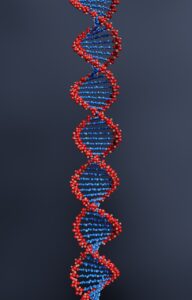Pleiotropy is a phenomenon in which one single gene shows or expresses multiple features or characteristics or traits.
Here are few Pleiotropy example
- Vestigial Gene and the Fruit Flies
- Sickle cell Anemia
- Phenylketonuria
- Frizzled feather trait
- Achondroplasia
- Acromegaly
- Albinism
- Austin syndrome
- Schizophrenia
- Marfan syndrome
- Deafness and pigmentation in cats
- Frizzle traits in cats or the Feline frizzle trait
- Cystic Fibrosis
Now let’s see all these examples in detail

Image credits- Pixabay
Vestigial Gene and the Fruit Flies
- Vestigial gene is a gene majorly responsible for the wing formation in fruit flies.
- The fruit fly with this vestigial gene defect will not be able to fly with its wings as they are really short.
- This defect is found in the second chromosome.
- The form of mutation is called the recessive mutation.
- 2 genes are present in the second chromosome, if one gene is healthy and the other is defective, the healthy wings will develop.
- Only if both the genes are defective, they develop as defective wings.
- This is why it is known as recessive mutation.
- From the above description, we can say that one gene shows or expresses multiple traits or features and this is one of the best examples for Pleiotropy.

Image credits- Wikimedia
Sickle cell Anemia:
- Sickle cell anemia is a condition in which the RBC in human body are misshapen.
- Usually the RBCs are in the shape of disc, but due to this condition they shape is something like a sickle.
- The ultimate role of RBC is to carry the oxygen molecules throughout the body.
- The problem arises in the mutation of the beta-globin gene where the misshapen RBC starts emerging.
- As there is a difference in the shape, there will be a block in the flow in veins and the role of the RBC will not be able to perform due to the sickle shape RBC.
- This will eventually lead to blocking of the RBCs to the other parts of the body.

Image credits- Wikimedia
Phenylketonuria:
- This is a perfect example of Pleiotropy in which one single gene produces multiple traits.
- This is a genetic disorder in which a child is born with a defect, that is the child has a defective gene in which they are not able to produce an enzyme called phenylalanine hydroxylase.
- This enzyme breaks down an amino acid called phenylalanine in the blood.
- When there is an issue in the secretion of this enzyme it leads to multiple defects in the central nervous system.
Frizzled feather trait:
- This Frizzled feather trait is seen in chickens.
- Usually the feather of a chicken is flat, but due to the defect in the gene responsible for feather formation, the feathers are outwardly curled.
- They also produce an accelerated metabolism and fattened organs which is life threatening.
- Due to this condition the chicken won’t be able to maintain the homeostasis.

Image credits- Wikimedia
Achondroplasia:
- Achondroplasia is a condition which is also called dwarfism.
- The dwarfism occurs when there is a mutation in the FGFR3 gene.
- FGFR3 gene is responsible for the maintenance and development of the bones and brain tissue.
- When the gene FGFR3 shows a different trait than the normal one it leads to dwarfism in the organism.
Acromegaly:
- Acromegaly is a condition in which the growth hormone is produced so much that leads to gigantism or in simple words excessive growth.
- It leads to enlargement of cartilages, bones, and other organs.
- Few studies showed that the GNAS gene is responsible for this somatic mutation and causes this condition.
Read More on Sequence Of Nitrogenous Bases In DNA:What, Why, Purpose, Detailed Facts
Albinism:
- Albinism is a condition that is due to the presence of the pleiotropic gene that has been produced by the genetic changes or the mutation in the TYR gene also called the tyrosinase gene.
- The primary role of the TYR gene is the production of melanin which is a pigment that is produced in the skin.
- Mutation in the TYR gene and the expression shows different traits than usual lead to the condition called Albinism.
Austin Syndrome:
- Austin syndrome is also called Multiple sulfatase deficiency or mucosulfatidosis.
- In this condition, mutation takes place in the gene responsible for the lysosomal storage due to the deficiency of various sulfatase enzymes.
Schizophrenia:
- It is a mental disorder in which many genes are involved in developing this condition.
- Studies show that mutation in AKT1, COMT, YWHAE, chromosome 22, ABCA13, C4A, DGCR2, DGCR8, DRD2, MIR137, NOS1AP, NRXN1, OLIG2, RTN4R, SYN2, TOP3B, ZDHHC8 may cause Schizophrenia.
Marfan syndrome:
- Marfan syndrome is a condition that affects the connective tissues present all over the body.
- Mutation in the FBN1 gene leads to this condition. FBN1 gene role is to produce a specific protein called fibrillin-1 to produce the connective tissue.
- When the pleiotropic gene FBN1 shows various characteristics, marfan syndrome arises.
Deafness and pigmentation in cats:
- One specific gene is responsible for the pigmentation in cats.
- Due to the pleiotropic gene presence, it not only affects the pigmentation but also the hearing capacity in cats which leads to deafness and also abnormal pigmentation.
- MITF, PMEL, KIT, EDNRB, CDH23, TYR, and TRPM1 are the genes responsible for Deafness and pigmentation in cats.
Frizzle traits in cats or the Feline frizzle trait:
- The frizzle trait in cats is similar to the Frizzled feather trait in chicken.
- Due to mutation, the gene becomes a pleiotropic gene and curling of the cat fur happens leading to the frizzle trait in cats.
Read More on Difference between animal and plant cell chromosomes: Comparative analysis on structure, function and facts
Cystic Fibrosis:
- Cystic fibrosis is a condition in which excessive mucus which is thick and sticky are formed around the organs.
- The gene CFTR when mutated forms the condition- Cystic Fibrosis in which the blockage of chloride channels takes place and thus leading to accumulation of ions and water across the cell membranes.
Summary of the 12+ Pleiotropy Example:
- Vestigial Gene and the Fruit Flies- Mutation in the Vestigial gene
- Sickle cell Anemia- Mutation in the beta-globin gene
- Phenylketonuria- Mutation in the PAH gene
- Frizzled feather trait- Deletion in the KRT75L4 gene
- Achondroplasia- Mutation in FGFR3 gene
- Acromegaly- Mutation in GNAS gene
- Albinism- Mutation in the TYR gene
- Austin syndrome- Mutation in SUMF1 gene
- Schizophrenia- Mutation in AKT1, COMT, YWHAE, chromosome 22, ABCA13, C4A, DGCR2, DGCR8, DRD2, MIR137, NOS1AP, NRXN1, OLIG2, RTN4R, SYN2, TOP3B, ZDHHC8.
- Marfan syndrome – Mutation in FBN1 gene
- Deafness and pigmentation in cats- Mutation in MITF, PMEL, KIT, EDNRB, CDH23, TYR, and TRPM1.
- Frizzle traits in cats or the Feline frizzle trait- REX mutation
- Cystic Fibrosis- Mutation in CFTR gene
Also Read:
- Seedless plant examples
- Are protists paraphyletic
- Intermediate species examples
- Holoenzyme and enzyme
- Siphonophores characteristics
- Cisternae in endoplasmic reticulum
- Silverfish types
- Unicellular plants examples
- Wild plants examples
- Parenchyma cells function

Hello, I am Sugaprabha Prasath, a Postgraduate in the field of Microbiology. I am an active member of the Indian association of applied microbiology (IAAM). I have research experience in preclinical (Zebrafish), bacterial enzymology, and nanotechnology. I have published 2 research articles in an International journal and a few more are yet to be published, 2 sequences were submitted to NCBI-GENBANK. I am good at clearly explaining the concepts in biology at both basic and advanced levels. My area of specialization is biotechnology, microbiology, enzymology, molecular biology, and pharmacovigilance. Apart from academics, I love gardening and being with plants and animals.
My LinkedIn profile-